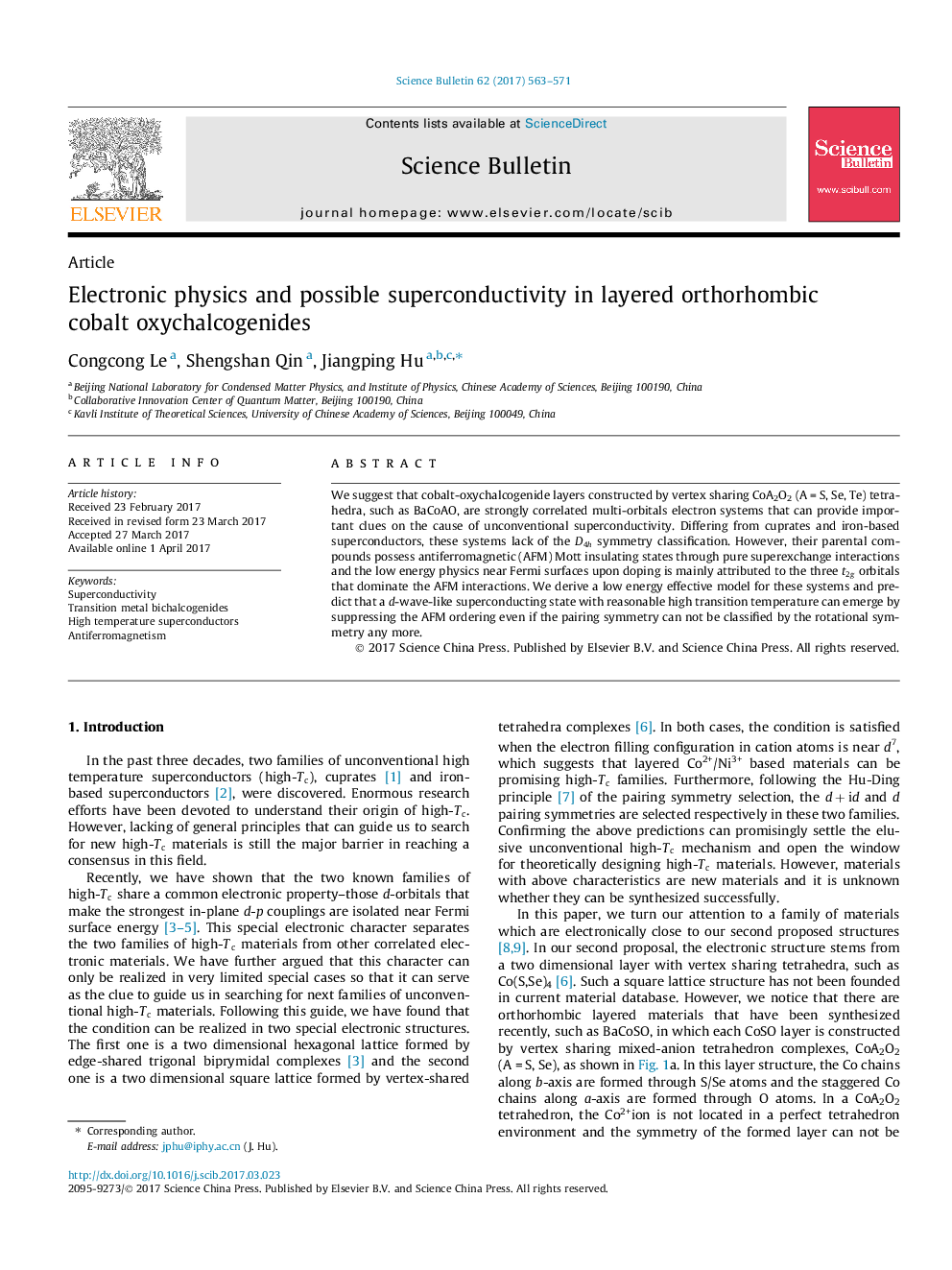| Article ID | Journal | Published Year | Pages | File Type |
|---|---|---|---|---|
| 5788783 | Science Bulletin | 2017 | 9 Pages |
We suggest that cobalt-oxychalcogenide layers constructed by vertex sharing CoA2O2 (AÂ =Â S, Se, Te) tetrahedra, such as BaCoAO, are strongly correlated multi-orbitals electron systems that can provide important clues on the cause of unconventional superconductivity. Differing from cuprates and iron-based superconductors, these systems lack of the D4h symmetry classification. However, their parental compounds possess antiferromagnetic (AFM) Mott insulating states through pure superexchange interactions and the low energy physics near Fermi surfaces upon doping is mainly attributed to the three t2g orbitals that dominate the AFM interactions. We derive a low energy effective model for these systems and predict that a d-wave-like superconducting state with reasonable high transition temperature can emerge by suppressing the AFM ordering even if the pairing symmetry can not be classified by the rotational symmetry any more.
Graphical abstractDownload high-res image (88KB)Download full-size image
